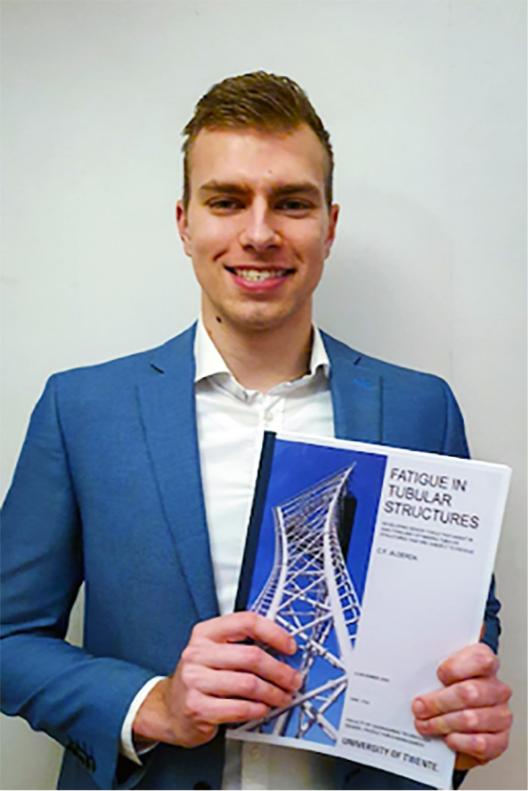

Fatigue is a material failure mechanism that might lead to problems when it is not considered in the design phase. For tubular structures, fatigue assessment is generally done by using analytical formulas to determine the hot-spot stress. These formulas are complex and design parameters are intertwined in multiple components of the fatigue assessment, which makes it hard for an engineer to estimate the impact of his design choices.
To gain insight in these parameters, one design tool is developed from scratch, and two existing software tools are programmed to perform fatigue calculations. The new design tool, called Fatigue Design & Assessment tool, is made in Excel. The two existing tools are Smart Synthesis Tool and Grasshopper. Two case studies are performed to analyse how the tools can be used to optimise the fatigue characteristics of a design.
Each of the software tools provides insight in design parameters, but all on a different level. The FDA tool can exactly tell how changing one certain parameter affects the outputs. The SST provides insight by creating and comparing many solutions within the solution space. The Grasshopper software offers an engineer insight in the fatigue performance while he is still creating the initial shape of the structure. A great advantage of Grasshopper is that no external software is needed to perform the structural analysis.
The studies have shown that with the insight provided by the software tools, an engineer is able to improve his design with regard to fatigue life, structure mass, weld volume or combined costs of materials and welding. In the first case study, one proposed concept shows a possible increase in fatigue life of 20%. A different concept shows that a mass reduction of 24% can be achieved, while maintaining the original fatigue life of 50 years.
In the second case study a concept is created in Grasshopper with a slightly different overall geometry. With this concept an improvement in fatigue life of 286% compared to the original design is achieved. The results of both studies prove that these tools are most effective if they are deployed early in the design process, or in a design where it is allowed to optimise many parts separately.
